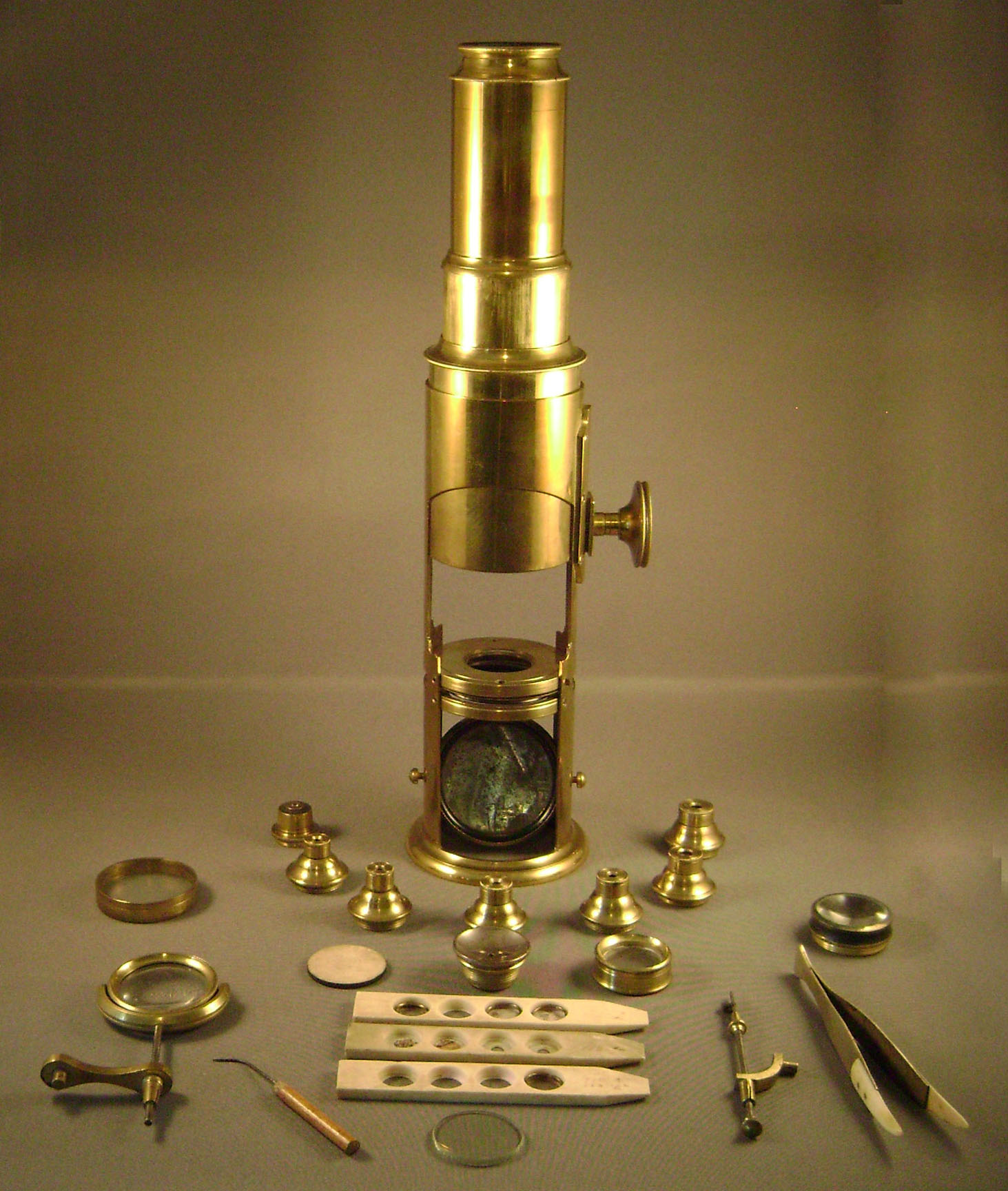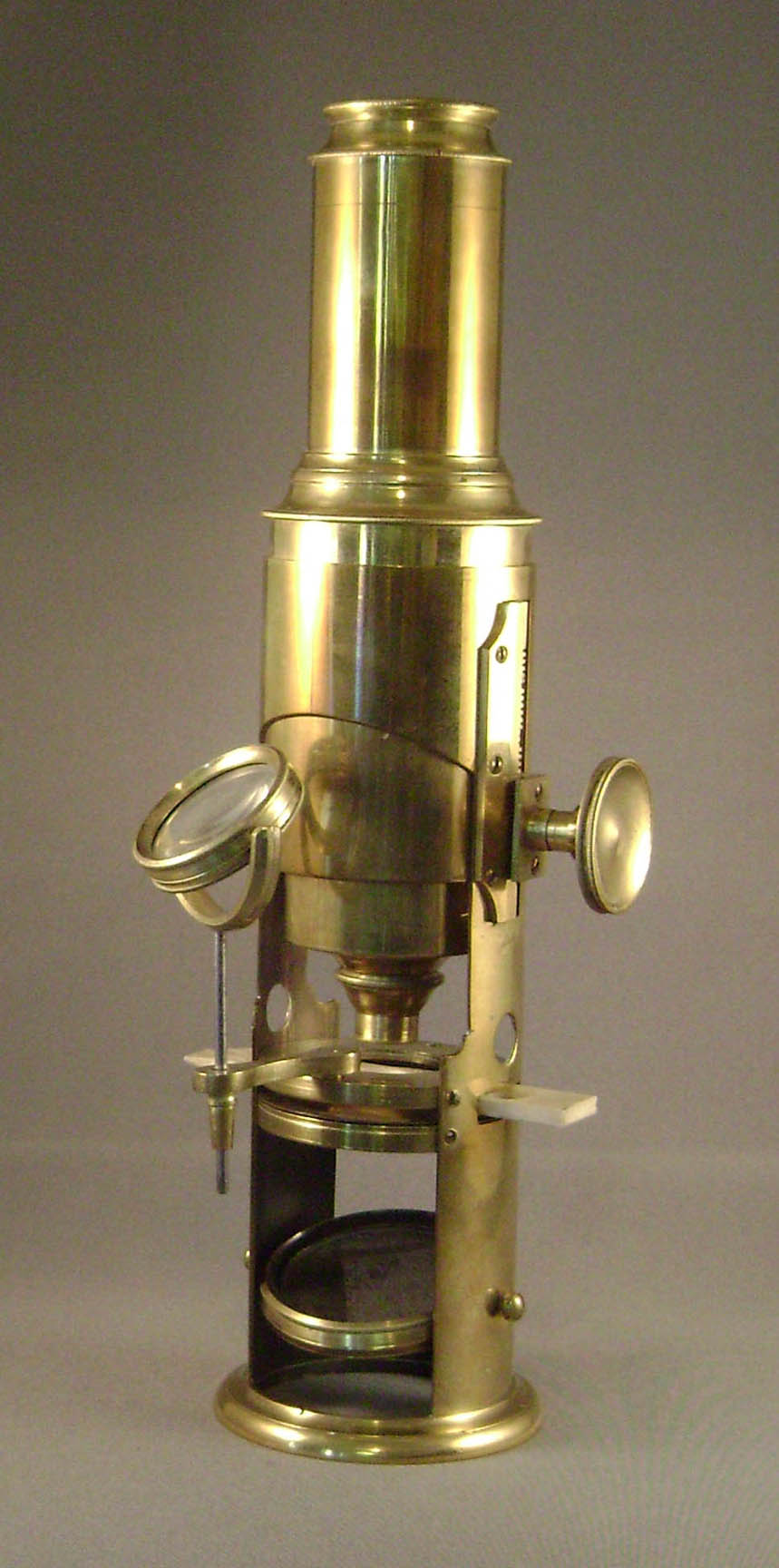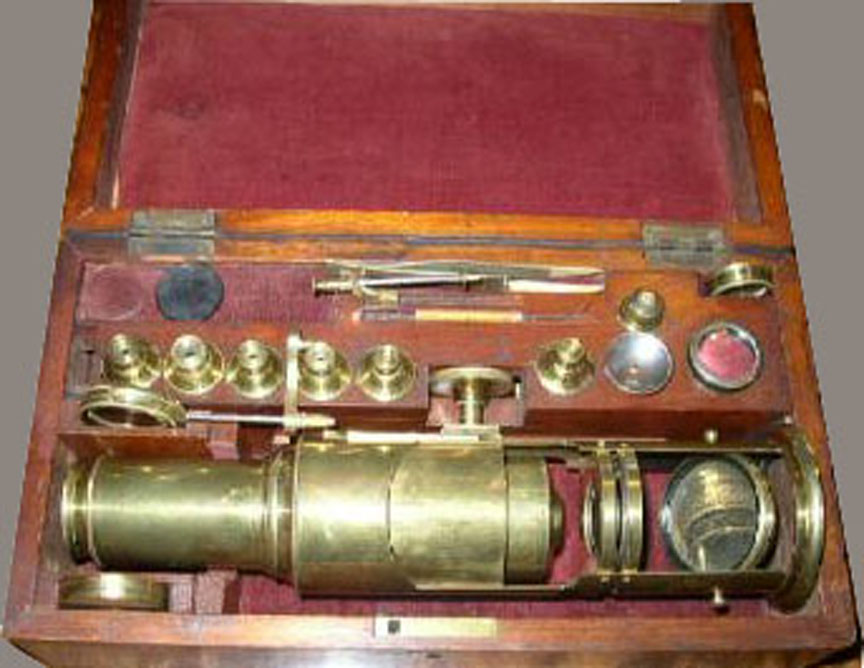MICROSCOPE-ANTIQUES.COM © 2013-15.
DRUM MICROSCOPE WITH RACK AND PINION FOCUSING:
c. Middle third of 19th Century
Unsigned
Serial Number: None

DESCRIPTION

 This is a typical example of a moderate quality but non-achromatic drum microscope, with original case and accessories
as was sold in England in the nineteenth century. The microscope is unsigned, as most were.
Unlike the French case-mounted variety also in this collection, it stands alone on its hollow foot.
This microscope focuses by rack and pinion, although a few teeth of the rack are damaged.
The outfit includes:
This is a typical example of a moderate quality but non-achromatic drum microscope, with original case and accessories
as was sold in England in the nineteenth century. The microscope is unsigned, as most were.
Unlike the French case-mounted variety also in this collection, it stands alone on its hollow foot.
This microscope focuses by rack and pinion, although a few teeth of the rack are damaged.
The outfit includes:
- Six individual conventional objectives
- A single lieberkuhn objective
-
one built-in eyepiece
- A Handlens
- Three bone or ivory sliders
- Glass stage insert
-
Black and White disc for the stage
- Stage-mounted condenser for illuminating opaque objects
-
Stage forceps
- Hand forceps
- Closed livebox
- Small open live well
- Dissecting needle
Missing from the accessories would have been a glass vial which would have fit into the holes on the side of the microscope and allowed the user to view, for example the circulation of blood in the tail of an eel or small fish.
HISTORY OF DRUM MICROSCOPES
The drum microscope was apparently invented by Germans in the earliest years of the 18th century. Benjamin Martin popularized his version about 1730, and original versions
were first made of cardboard and wood, sometimes with ornate leather covering. This design
is grossly inferior to even early 19th century microscopes, but compared to others remained one of the
least expensive to produce. For this reason the production of drum microscopes, initially non-achromatic, continued for
many years and even into the twentieth century. They were equipped with achromatic objectives by the French, but usually
nonachromatic objectives by the English.
As time passed, the design was limited to smaller versions than the one seen here, with few accessories; these smaller, cheaper examples were intended for the low end of the market, mostly for amateurs and children and these smaller cheaper versions were
nearly all produced in France, exported in large numbers; there are several examples of these smaller less expensive toy drum microscopes in this collection and they continue to
be plentiful on the antique market, even in the twenty-first century. The small cheap versions were still being sold
by Sears in the 1930's.
The version shown here, of larger size and with an extensive range of accessories, was not made past the 19th century.


 This is a typical example of a moderate quality but non-achromatic drum microscope, with original case and accessories
as was sold in England in the nineteenth century. The microscope is unsigned, as most were.
Unlike the French case-mounted variety also in this collection, it stands alone on its hollow foot.
This microscope focuses by rack and pinion, although a few teeth of the rack are damaged.
The outfit includes:
This is a typical example of a moderate quality but non-achromatic drum microscope, with original case and accessories
as was sold in England in the nineteenth century. The microscope is unsigned, as most were.
Unlike the French case-mounted variety also in this collection, it stands alone on its hollow foot.
This microscope focuses by rack and pinion, although a few teeth of the rack are damaged.
The outfit includes: